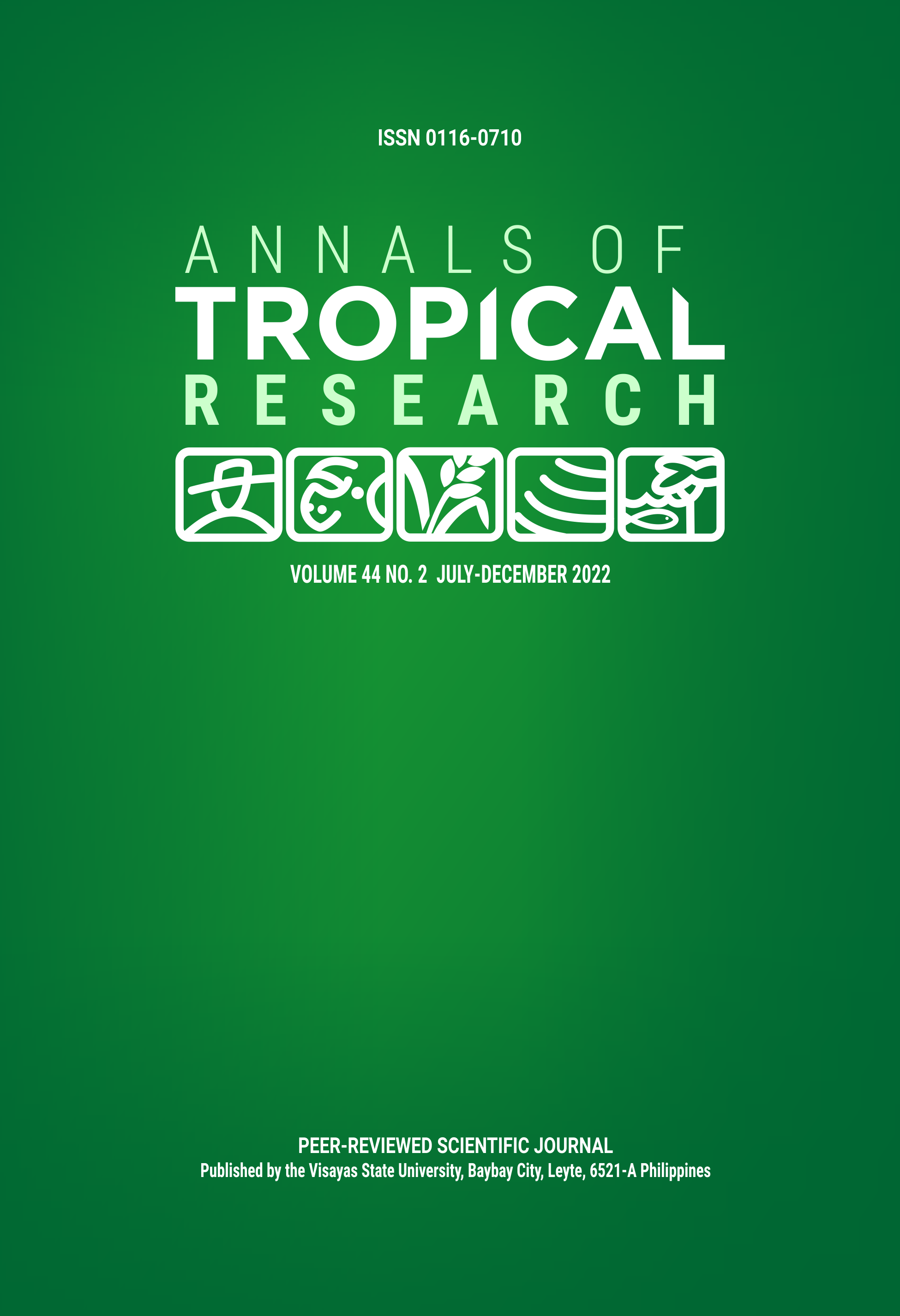Growth and yield response of lowland rice (Oryza sativa L.) to planting density and nutrient management
DOI:
https://doi.org/10.32945/atr44210.2022Keywords:
Foliar urea, integrated nutrient management, lowland rice, N use efficiency, vermicastAbstract
Planting density and nutrient management practices may affect lowland rice production. This study was conducted to evaluate their effects on growth and yield of lowland rice (NSIC Rc400), determine the appropriate number of seedlings hill-1 and nutrient management for optimum yield, and assess their profitability on rice. A split-plot arranged in Randomized Complete Block Design was used with three replications. Planting densities (M1=1 seedling hill-1 and M2=3-5 seedlings hill-1) were designated as mainplots while nutrient management practices as subplots;T1=0-0-0 (Control), T2=120–60–60kg ha-1 N, P2O5, and K2O, T3=60–30–30kg ha-1 N, P2O5, and K2O + 2.5t ha-1 vermicast + biweekly foliar urea spray, T4=45–30–30kg ha-1 N, P2O5, and K2O + 2.5t ha-1 vermicast + weekly foliar urea spray, and T5=30–30–30kg ha-1 N, P2O5, and K2O + 2.5t ha-1 vermicast + weekly foliar urea spray. Results revealed that M1 produced more filled spikelets panicle-1 regardless of nutrient management. Early heading and maturity were noted at T1, T4, and T5 treatments. Integrated nutrient application at T3 significantly increased growth, and yield parameters of lowland rice with higher gross income and benefit-cost ratio, next to the recommended dose of inorganic fertilizer (T2). This was due to the high labor and material cost incurred with the integrated nutrient application. Highest net income and benefit-cost ratio were obtained with M1 and T2. Transplanting 1 seedling hill-1 with combined inorganic and vermicast application (T3) seemed appropriate for NSIC Rc400 especially if the farmer has his own vermicast production.
Downloads
Submitted
Published
How to Cite
Issue
Section
License

This work is licensed under a Creative Commons Attribution-NonCommercial-ShareAlike 4.0 International License.











